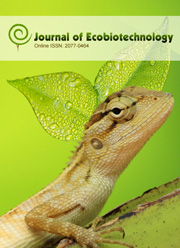Control Potential of Male and Female Oxyopes shweta (Araenae: Oxyopidae) against Polyphagous Insect Pest Spodoptera litura
Abstract
Predator-Prey interactions are an important component for understanding the feeding potential of the predator. The present study was undertaken in laboratory microcosm arena. Two kinds of interactions (functional response and numerical response) occurring between lynx-spider and Spodoptera litura larvae were studied. The study shows that female lynx-spiders have more feeding potential than male spiders. Female spiders show a Type II functional response where as the males show no definite pattern of functional response. Numerical response study shows that at low densities of predators, there is cooperative feeding whereas at higher prey densities there is competition for prey. However such feeding competition doesn’t culminate in cannibalism. The study shows that in natural habitat Lynx spiders can be effective in regulating the population of the gregariously occurring lepidopteran larvae, hence contributing to biological control of insect pests.
---
1Department of Biotechnology, Periyar University, Salem, Tamilnadu – 636011, India
2Department of Zoology, Faculty of Science, The Maharaja Sayajirao University of Baroda, Vadodara -390002, India
---
Please Cite This Article As:
Â
M.S. Shivakumar and Dolly Kumar. 2010. Biological Control Potential of Male and Female Oxyopes shweta (Araenae: Oxyopidae) against Polyphagous Insect Pest Spodoptera litura. J. Ecobiotechnol. 2(5):20-24.
Â



 .
.